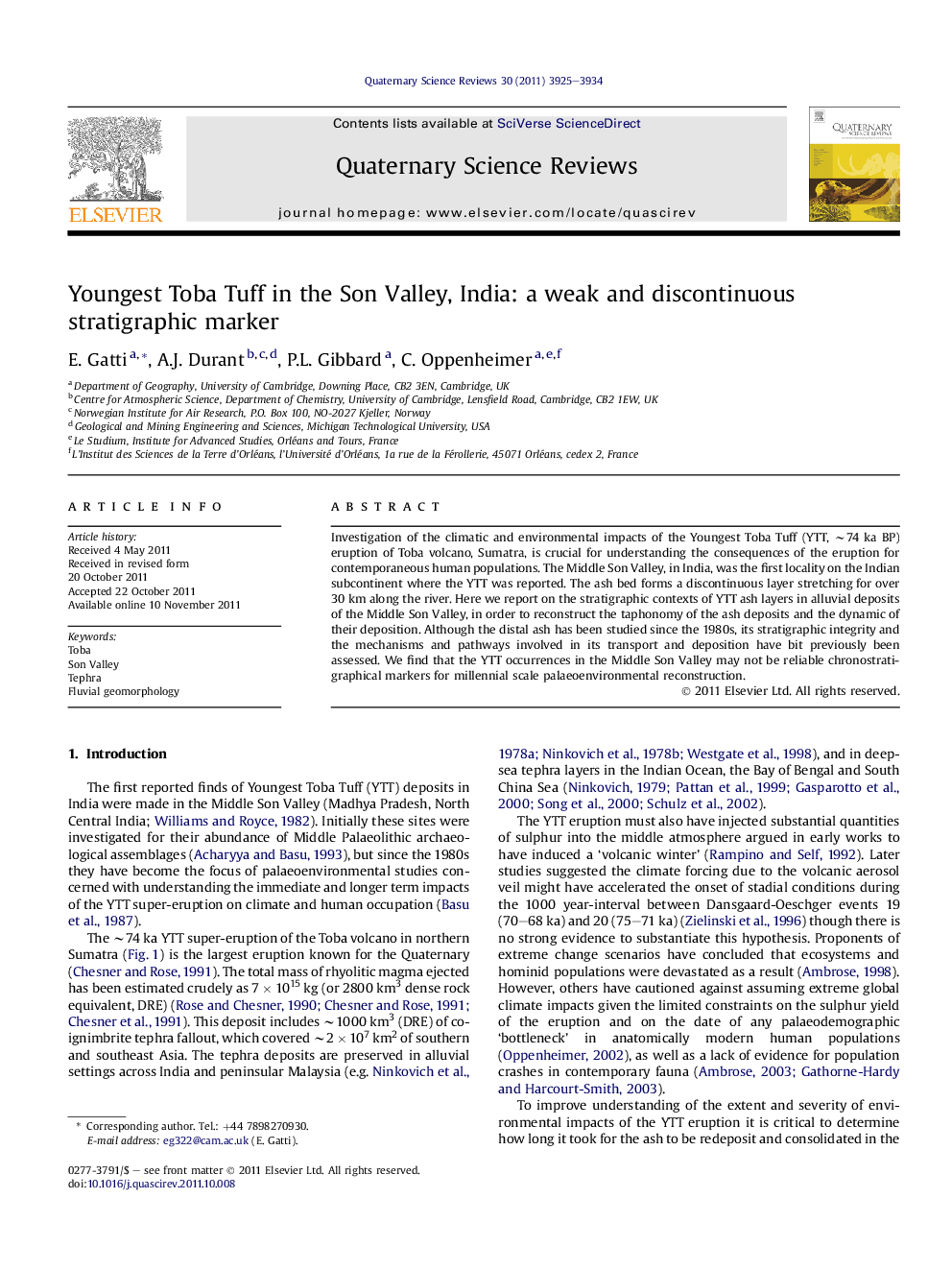| Article ID | Journal | Published Year | Pages | File Type |
|---|---|---|---|---|
| 4736574 | Quaternary Science Reviews | 2011 | 10 Pages |
Investigation of the climatic and environmental impacts of the Youngest Toba Tuff (YTT, ∼74 ka BP) eruption of Toba volcano, Sumatra, is crucial for understanding the consequences of the eruption for contemporaneous human populations. The Middle Son Valley, in India, was the first locality on the Indian subcontinent where the YTT was reported. The ash bed forms a discontinuous layer stretching for over 30 km along the river. Here we report on the stratigraphic contexts of YTT ash layers in alluvial deposits of the Middle Son Valley, in order to reconstruct the taphonomy of the ash deposits and the dynamic of their deposition. Although the distal ash has been studied since the 1980s, its stratigraphic integrity and the mechanisms and pathways involved in its transport and deposition have bit previously been assessed. We find that the YTT occurrences in the Middle Son Valley may not be reliable chronostratigraphical markers for millennial scale palaeoenvironmental reconstruction.
► Lithofacies associations of the Son Valley revealed a tephra-bearing environment. ► Pre-YTT river sand-dominated, low-sinuosity and low-gradient. ► Ash deposits do not provide clear chronostratigraphic marker. ► Only one occurrence could be considered “primary ash”. ► No ash found in proximity of archaeological artefact findspots.
